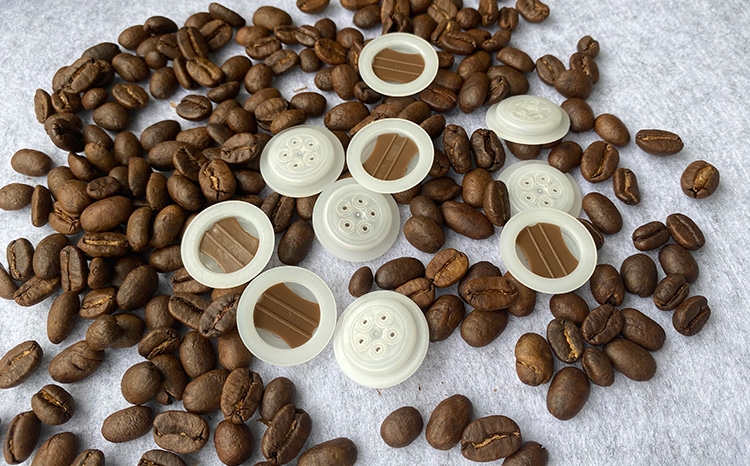
11 Jun 2020
Can the roasted coffee beans be brewed immediately? Yes, but is not delicious as expected. Freshly roasted coffee beans have an aging period to release carbon dioxide and obtain the best taste period. So how should we store the coffee? We will usually think of packaging bag for storing coffee beans initially, but have you observed the packaging of coffee beans? Have you ever noticed that there is a white or transparent valve behind or inside the bag? Or you just ignored it even it saw it? Don't overlook this small valve and think it is optional. In fact, the little coffee valve is the secret that controls the "life or death" of coffee beans.
This valve is what we name as the "coffee degassing valve" and it is also called a one-way degassing valve. The one-way degassing valve is crucial to freshness of coffee. The one-way degassing valve in the coffee bean bag is an accessory that prevents air from flowing back. There are two points if we briefly summarize the function of the one-way degassing valve. One is to exhaust the gas inside the bag, and the other is to isolate the air from the outside of the bag. Next, Wojin Valve is going to introduce these two functions and how it works.
1. Degassing
The original coffee beans contain acids, proteins, esters, carbohydrates, water and caffeine. After roasting coffee beans at a high temperature, a series of chemical reactions such as Maillard reaction will generate carbon dioxide. Generally speaking, the carbon dioxide and other volatile gases released by roasted coffee beans account for 2% of the weight of the whole coffee bean. 2% of the gas will be slowly released from the fiber structure of the beans, and the release time will be related to the roasting method. Because coffee beans volatile carbon dioxide by itself, we can see the roasted coffee beans in a sealed bag would bulge over time. This is the so-called "swelling bag". With a one-way degassing valve, it helps to discharge these inert gases in the bag in time and will not allow these gases to oxidize the coffee beans in order to retain the freshness for the coffee beans.
2. Isolate the air
So, how to isolate the air outside while the coffee beans are exhausting? One-way degassing valve is different from ordinary gas valves. If we use an ordinary degassing valve, it will allow the external air goes into the bag while discharges the internal air, which destroys the airtightness of the packaging bag and make coffee beans continue to oxidize. That is, it will make the aroma evaporate and deteriorate the ingredient. In comparison, the one-way degassing valve will not work like this. It will not allow the outside air to enter the bag while discharging the internal carbon dioxide. So, how does it prevent the external air from entering the bag? Wojin Valve tells you how it works: When the air pressure in the bag reaches a certain threshold, the valve of the one-way degassing valve will open to release the gas in the bag until the air pressure drops below the threshold of the one-way valve. Then the valve of it will close, and the packaging bag returns to a sealed state.
Therefore, we conclude that the unidirectionality of the coffee degassing valve is its most basic requirement and the most advanced requirement. When the roasting degree of coffee beans is deeper, the exhausting effect will be stronger, and the carbon dioxide will be released faster.

Tag: coffee valve
Originally published 11 Jun 2020, updated 11 Jun 2020.
Blog
Coffee Bean Storage Tubes with valve keeps coffee fresh and aromatic
05 Jun 2025The WOJIN coffee bean storage tubes features a built-in one way degassing valve, preserving coffee aroma and freshness, ideal for display and sampling.
WOJIN Conducts Employee Product Training Session
08 May 2025WOJIN quality control training combined theory and practice to equip employees with skills to identify defects while reinforcing the quality lies in details philosophy.
WOJIN Showcased Coffee Bag Degassing Valve Solutions at HOTELEX Shanghai
12 Apr 2025WOJIN took part in HOTELEX 2025, held at the National Exhibition and Convention Center in Shanghai.